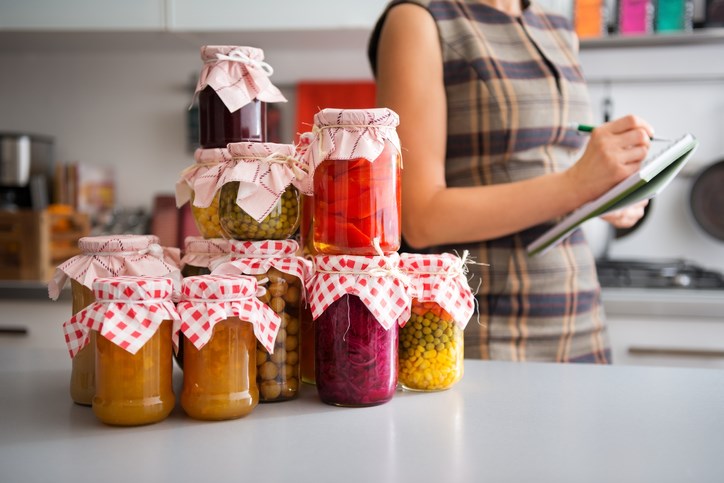The image of a harried, country housewife in an apron, blowing stray hairs out of her eyes as she bends to stir a pot on a scorching hot stove, is a vision that might leap to mind when some people think of canning. It may be a scene from a 1950s kitchen, but certainly doesn’t represent today’s resurgence of interest in this scrumptious endeavor.
There used to be a time when folks relied on gardens, and the art of preserving to feed their families all year long. Then, industry got us to believe either we couldn’t do it for ourselves or they could do it better. However, with the present turn back towards healthy, whole foods and a respect for what grows naturally, can be sourced locally or can be grown ourselves, canning has taken on a whole new reputation.
Preserving our own food leads one to believe in the possibility of self-sufficiency. As though we could perhaps flee this rat race, have a milk cow, keep a few chickens and live off the land — and jam. Not always practical I suppose, but an interesting thought and a dream I’ve indulged in more than once, truth be told.
Back to reality, the short list of ingredients required to make jam, including fruit, sugar and pectin, make it sound foolishly simple to prepare. There’s room for a small margin of error, but it all tastes dandy whether it’s a bit runny or too stiff. I’ve made a lot of it in my day, most recently raspberry.
It’s gratifying to stand back and look lovingly at all the glistening, ruby red jars lined up on the counter, awaiting the snap to signify they’ve sealed properly. And, when the lid is popped open during a long, frigid winter, the sweet scent of summer goodness escapes. Its pungent fragrance brings back memories of luscious fruit hanging ripe and heavy under prickly branches, and July sunshine seeping into your bones as you wend your way through the thick bushes to seek it out.
Certainly canning isn’t limited only to the preparation of jam. Almost anything can be preserved if done correctly. It’s a labour-intensive task that’s richly rewarding. There’s a great sense of accomplishment to be had when you can stand back and admire shelves of gleaming pots in every hue and colour, as well as in eating the produce from your garden all year long.
It’s the same concept with all aspects of the harvest. It just plain feels good to generate your own food and nourish your family and animals by the labour of your own hands. There’s something primal about this need. It’s satisfying to the soul when all is safely stowed inside, protected from the elements. Then, we can sit back and laugh in the face of Old Man Winter from our easy chair in front of a roaring fire, figuratively speaking.
The image of a homemaker slaving over an open fire as she preserves food for her family has transformed, but the belief that it’s the best alternative, remains unchanged. It’s encouraging to know the fine old art of canning is gaining in popularity once more.
Helen lives on the family farm near Marshall, Sask. where she is author, columnist and works in education. To contact her, or learn more about her books, go to myprairiewool.com or write Box 55, Marshall, Sask. S0M1R0




